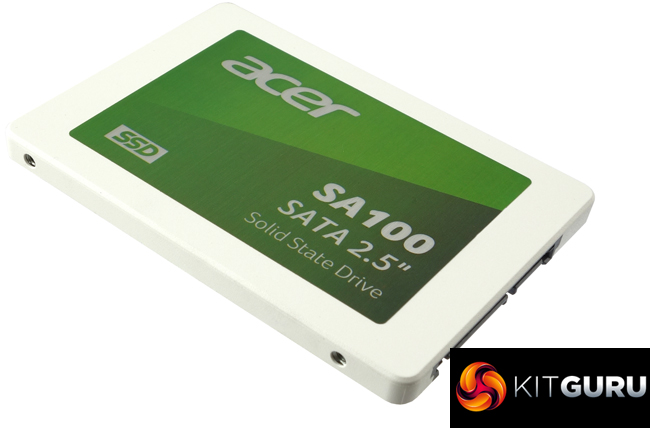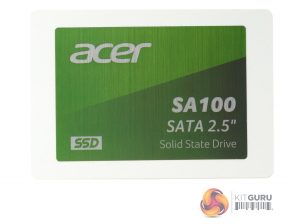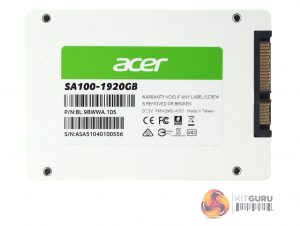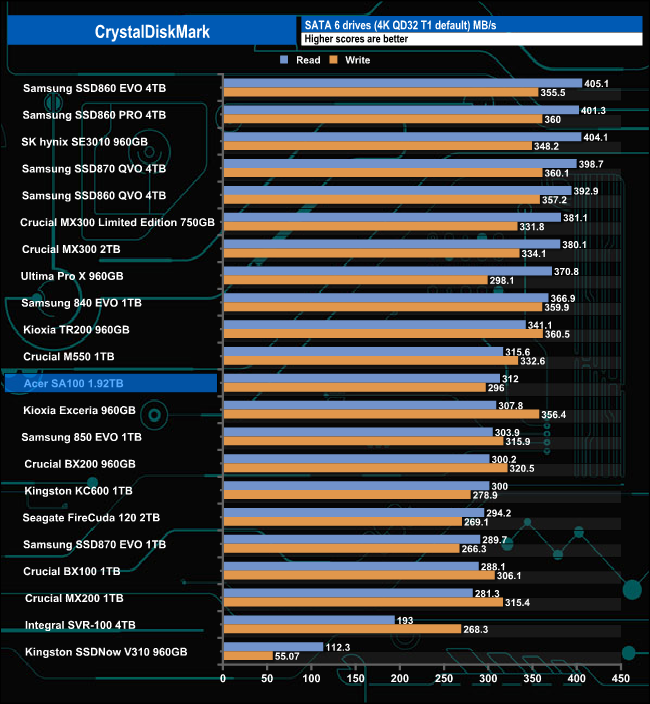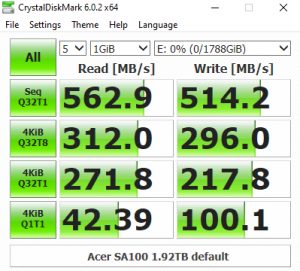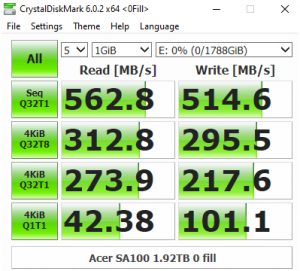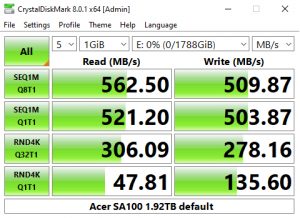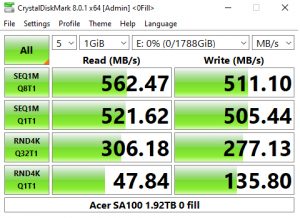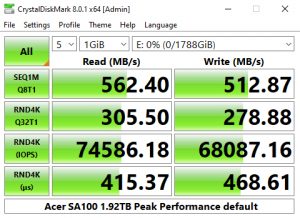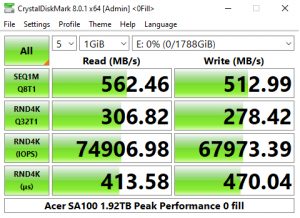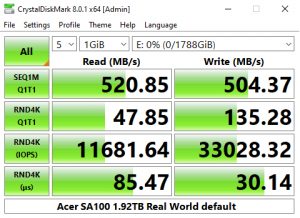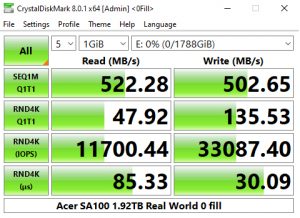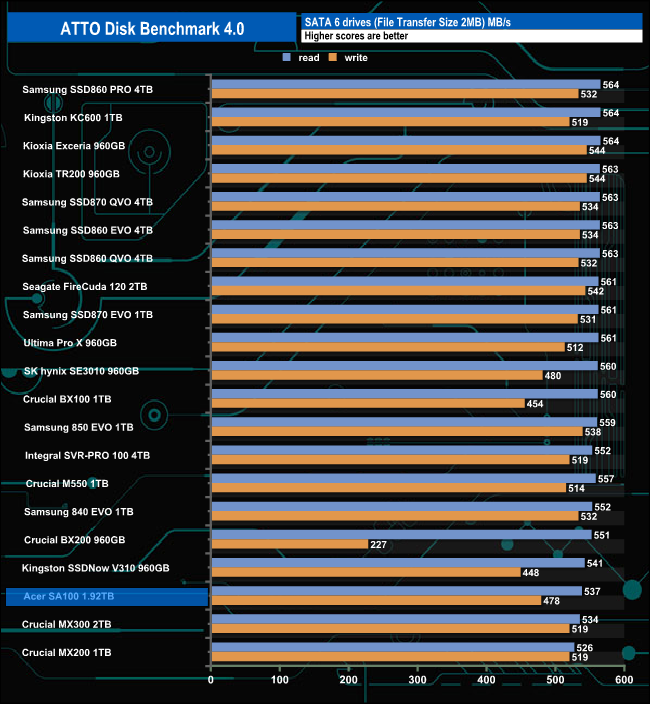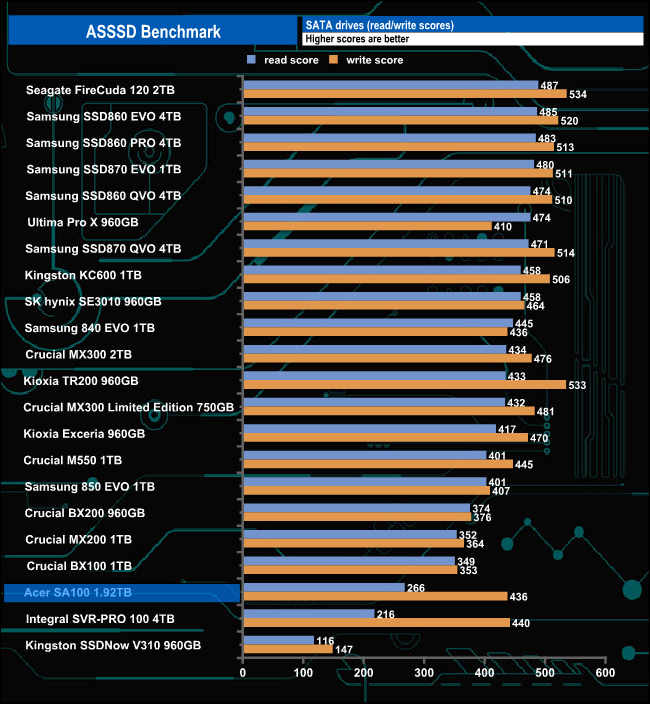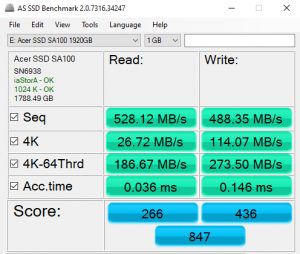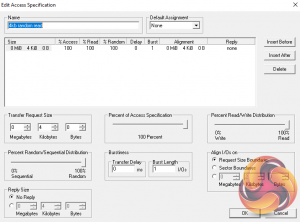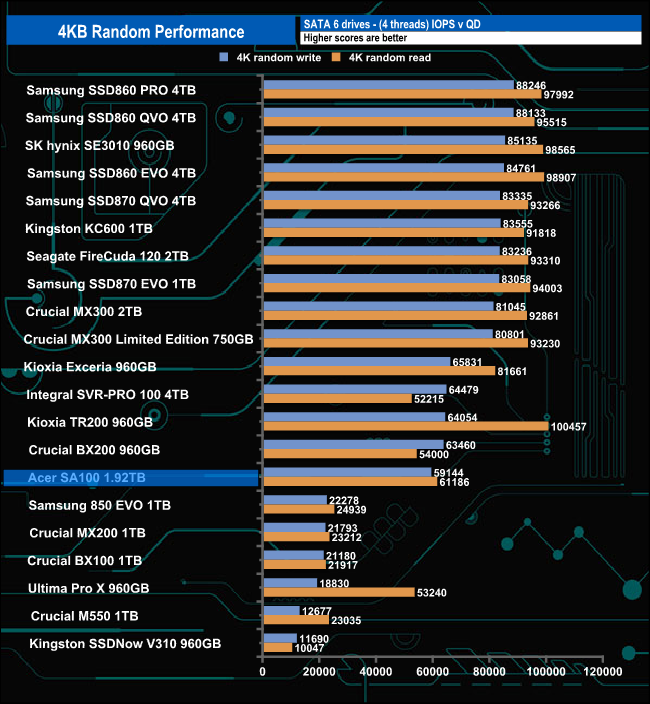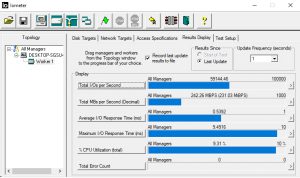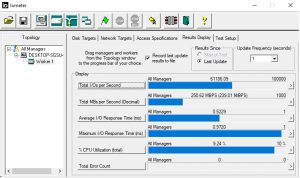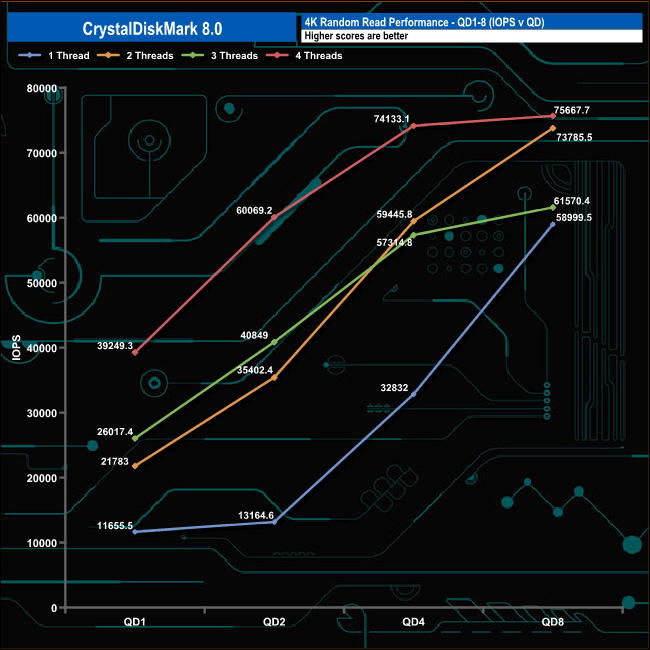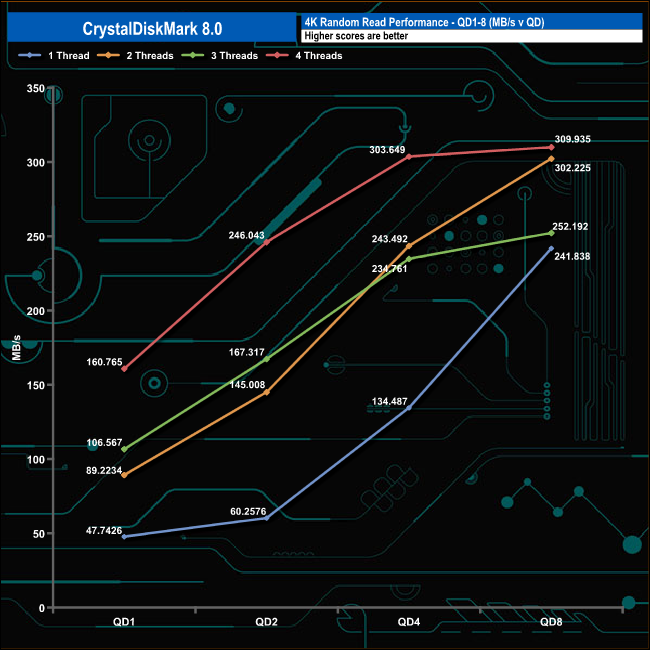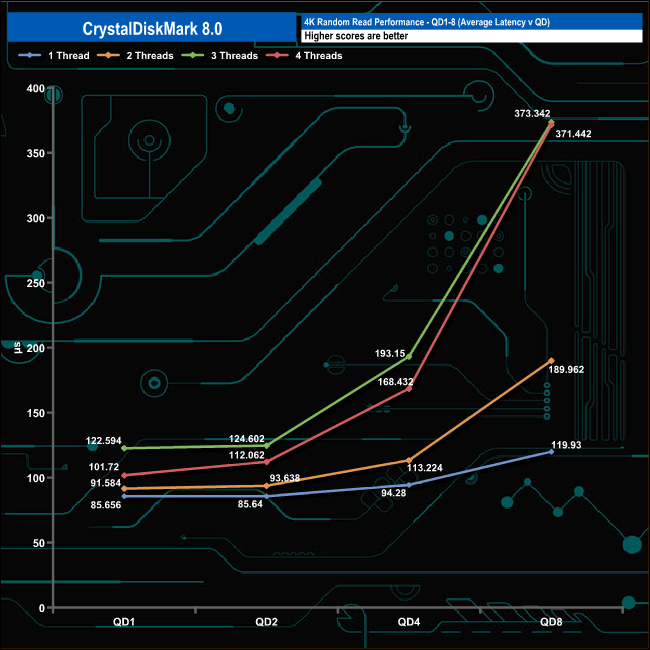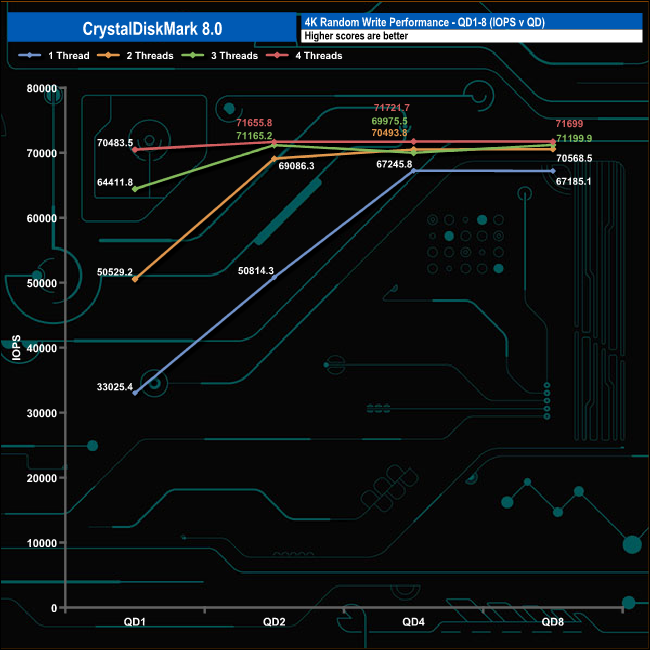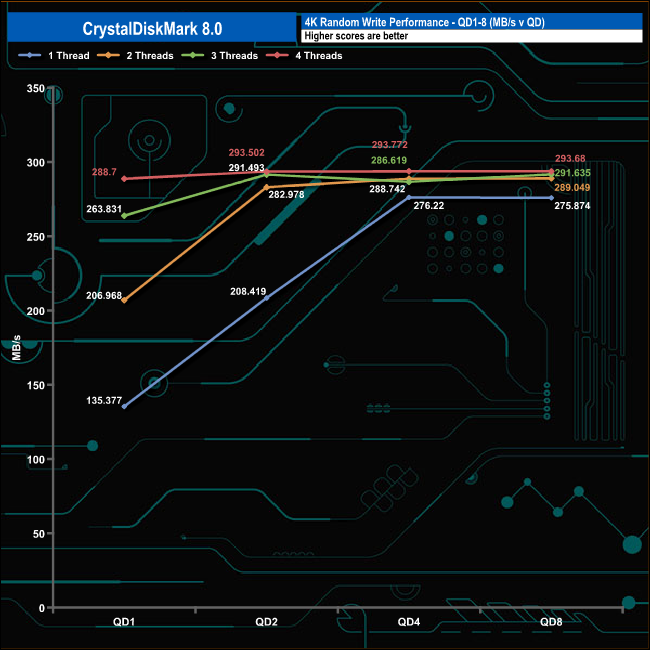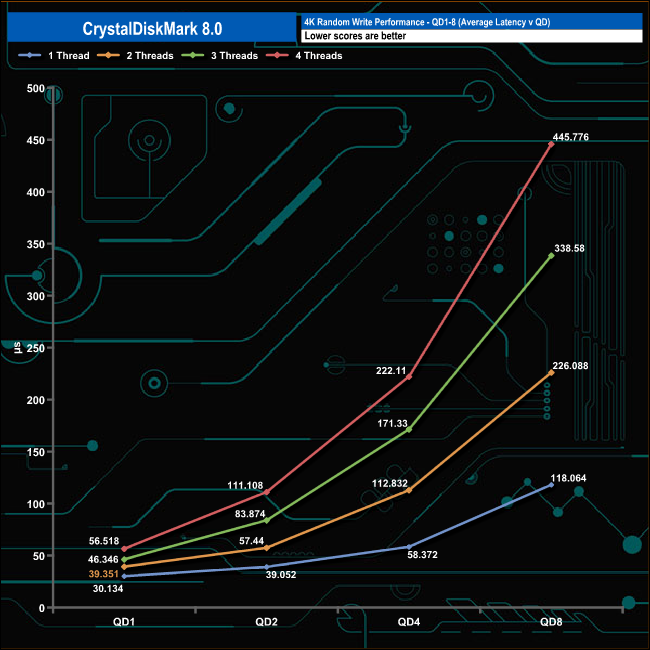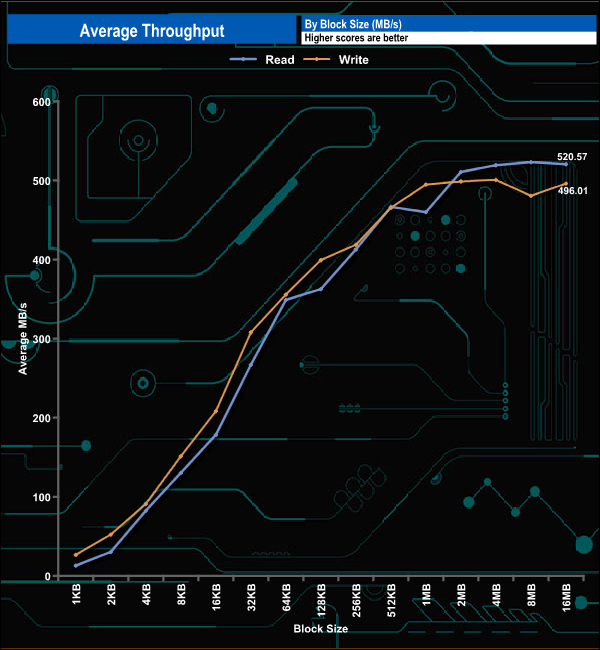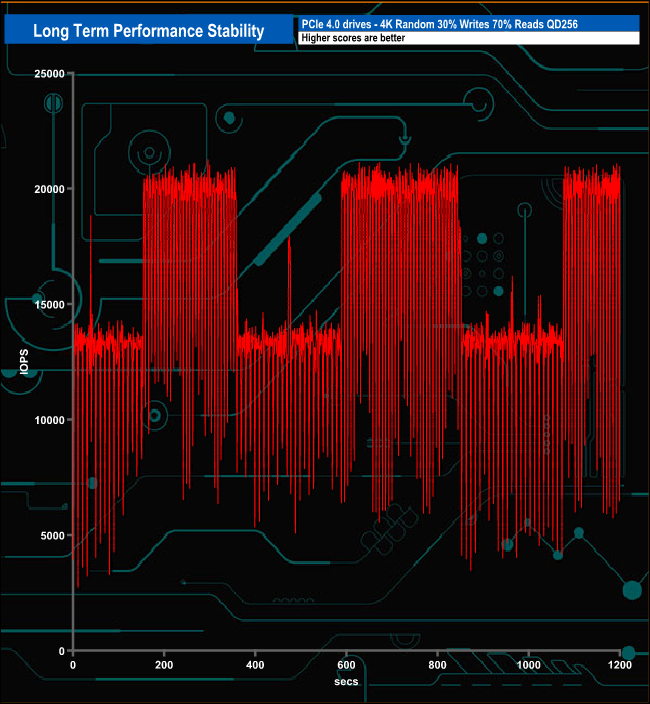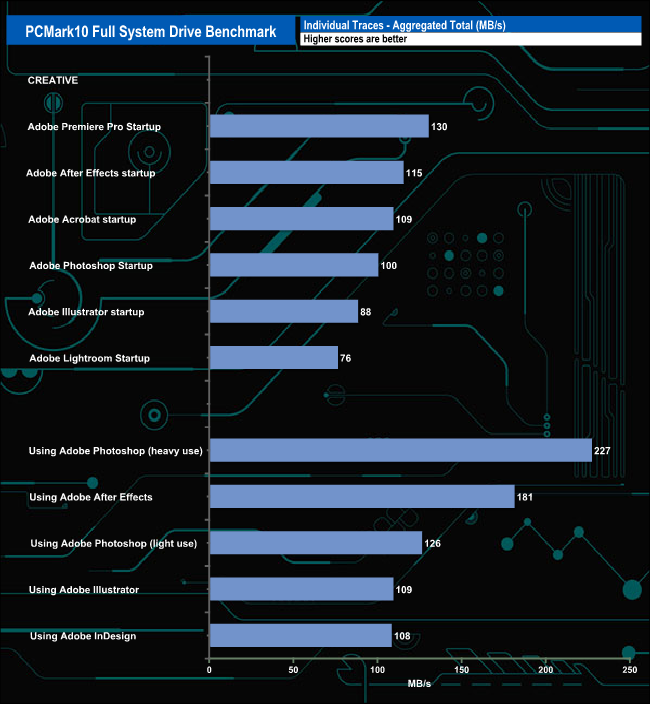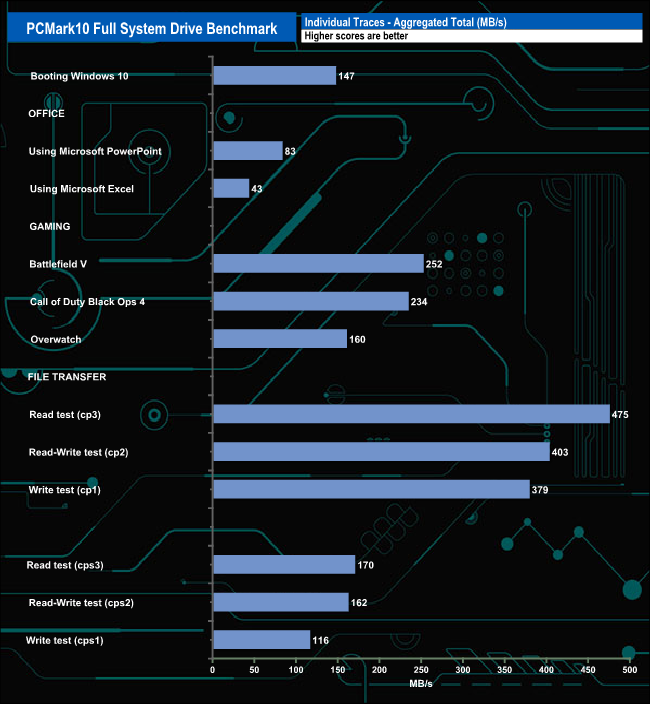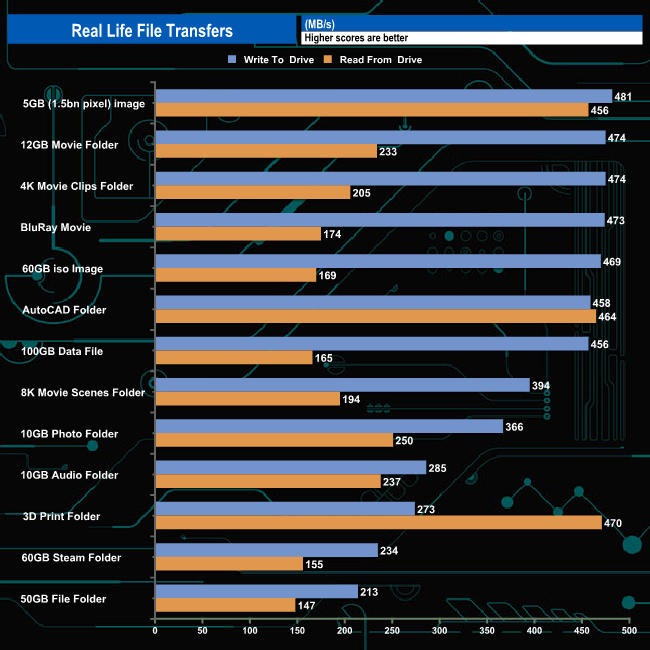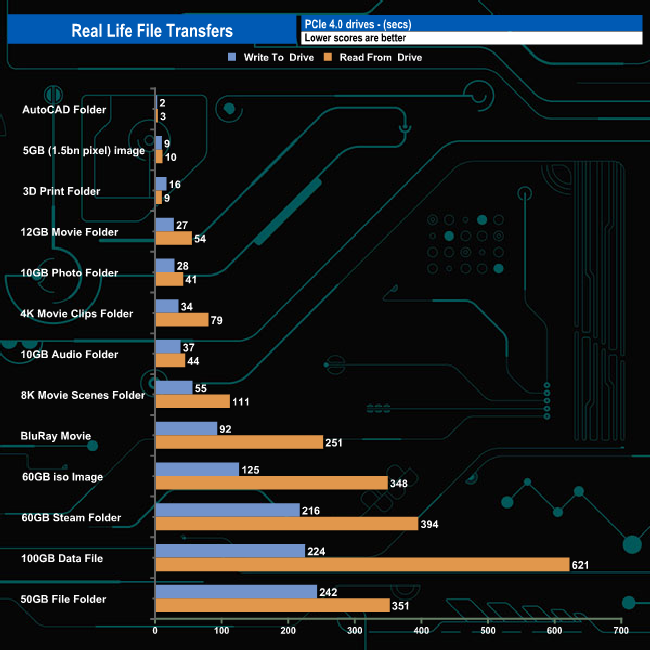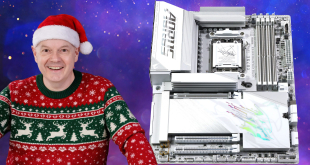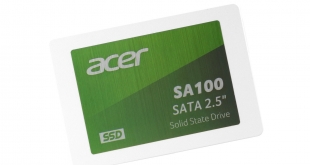
Acer has entered the storage market with a range of 2.5″ SATA, M.2 SATA and M.2 PCIe NVMe drives, including the entry-level 2.5in SATA-based SA100 we are looking at here. Using a DRAM-less Maxio MAS0902A-B2C 4-channel controller, has the Acer SA100 got what it takes to mix with the big boys of the SSD market?
The Acer SA100 comes in a range of five capacity's; 120GB, 240GB, 480GB, 960GB and the 1.92TB flagship model we are looking at here. At the heart of the SA100 is a DRAM-less design Maxio MAS0902A-B2C 4-channel controller which looks after, in the case of the 1.92TB drive, four 3D NAND packages.
Sequential read performance is quoted as up to 560MB/s for the 480GB, 960GB and 1.92TB models with the 256GB drive rated at up 549MB/s and the entry-level 120GB drive, 561MB/s. The 1.92TB drive gets a Sequential Write rating of up to 508MB/s swiftly followed by the 960GB model at up 507MB/s. The 480MB drive is rated up to 493MB/s while the 240GB drive has the slowest write performance at up to 449MB/s. The 120GB drive is rated as up to 474MB/s.
When it comes to the official random performance, the 1.92TB drive is rated as up to 76,000 IOPS for reads and up to 77,000 IOPS for writes. The 960GB drive has the fastest random read performance, up to 84,000 IOPS (up to 72,000 IOPS writes while the 240GB drive has the slowest random reads at up to 40,000 IOPS (71,000 IOPS writes).
The 1.92TB drive has an endurance rating of 600TBW and Acer back the drive with a 3-year limited warranty.
Physical Specifications:
- Usable Capacities: 1.92TB.
- NAND Components: 3D NAND.
- NAND Controller: Maxio MAS0902A-B2C.
- Cache: none.
- Interface: Serial ATA (SATA) 6Gb/s (SATA III).
- Form Factor: 2.5in, 7mm.
- Dimensions: 100 x 70 x 6.7 mm.
- Drive Weight: 38g.
Firmware Version: SN6938.
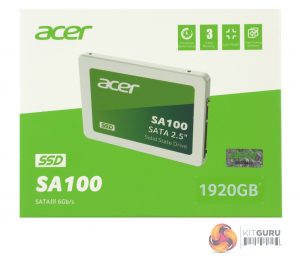
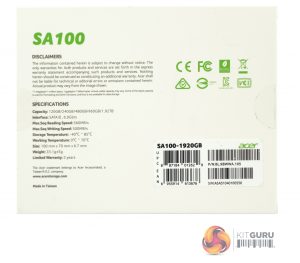
Acer's SA100 drive comes in a compact box with an image of the drive on the front below which is a sticker carrying the drive's capacity. Above the image are four icons representing enhanced performance, the fact that the drive comes with a 3-year warranty, that it's lightweight and it comes with free cloning software (by downloading Acronis True Image OEM from the Acer website). The rear of the box has a small list of the drive specifications.
The Acer SA100 uses a standard 2.5in, 7mm format and is housed in a plastic enclosure that has four metal plates threaded for mounting screws.
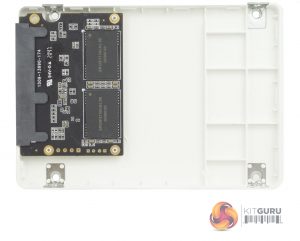
The components for the 1.92TB SA100 sit on a tiny PCB.
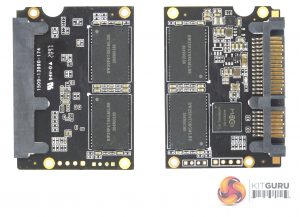
One side of the PCB holds two NAND packages (coded BW29F4T08GMLBE) while the other side of the PCB holds the Maxio MAS0902A-B2C controller and another two NAND packages.
The Maxio MAS0902A-B2C is a very compact (9mm x 9mm) DRAM-less design 4-channel controller using two computing cores supporting up to 4TB of 2D MLC/TLC 3D MLC/TLC or QLC NAND via a Toggle3.0/ONFi4.0 interface. It uses Maxio's own Agile ECC 2 error correction and WriteBooster 2 SLC caching technologies.
For testing, the drives are all wiped and reset to factory settings by HDDerase V4. We try to use free or easily available programs and some real-world testing so you can compare our findings against your own system.
This is a good way to measure potential upgrade benefits.
Main system:
Intel Core i7-7700K with 16GB of DDR4-3200 RAM, Sapphire R9 390 Nitro and an Asus Prime Z270-A motherboard.
Other drives
Crucial BX100 1TB
Crucial BX200 960GB
Crucial M550 1TB
Crucial MX200 1TB
Crucial MX300 2TB
Crucial MX300 Limited Edition 750GB
Integral SVR-PRO 100 4TB
Kingston SSDNow V310 960GB
Kingston UV500 960GB
Kioxia Exceria 960GB
Kioxia TR200 960GB
Samsung SSD840 EVO 1TB
Samsung SSD850 EVO 1TB
Samsung SSD860 EVO 4TB
Samsung SSD860 QVO 4TB
Samsung SSD860 PRO 4TB
Samsung SSD870 EVO 1TB
Samsung SSD870 QVO 4TB
Seagate FireCuda 120 2TB
SK hynix SE3010 960GB
Ultima Pro X 960GB
Software:
Atto Disk Benchmark 4.0.
CrystalMark 6.0.2 / 7.0.0
AS SSD.
IOMeter.
PCMark 10
All our results were achieved by running each test five times with every configuration this ensures that any glitches are removed from the results. Trim is confirmed as running by typing fsutil behavior query disabledeletenotify into the command line. A response of disabledeletenotify =0 confirms TRIM is active.
CrystalDiskMark is a useful benchmark to measure theoretical performance levels of hard drives and SSD’s. We are using versions 6 & 8 for testing.
In the CrystalDiskMark QD32 single-threaded benchmark test runs, the scores of 312MB/s and 296MB/s for reads and writes respectively put the Acer SA100 into mid-position in the results table. We could confirm the official Sequential 560MB/s read performance with a tested score of 562MBs and also the official write figure of 508MB/s with the best test result of 514MB/s.
CrystalDIskMark 8
Once again we could confirm those official Sequential figures with CrystalDiskMark 8. Looking at the two benchmark result screens it appears that the Maxio MAS0902A-B2C controller in the SA100 doesn’t have a preference in the type of data it is being asked to work with.
CrystalDIskMark 8 – Peak Performance Profile
CrystalDiskMark 8 includes a couple of profiles that can be used for testing – Peak Performance and Real World. The result screens for these two profiles not only display MB/s results but also IOPS and latency.
CrystalDIskMark 8 – Real World Profile
Acer quotes 4K random performance for the 1.92TB drive as up to 76,000 IOPS for reads and up to 77,000 IOPS for writes. Testing the drive with the Peak Performance profile, the best read figure produced by the drive was 74,906 IOPS with writes at 68,087 IOPS, both short of the official figures.
The ATTO Disk Benchmark performance measurement tool is compatible with Microsoft Windows. Measure your storage systems performance with various transfer sizes and test lengths for reads and writes. Several options are available to customize your performance measurement including queue depth, overlapped I/O and even a comparison mode with the option to run continuously.
Use ATTO Disk Benchmark to test any manufacturers RAID controllers, storage controllers, host adapters, hard drives and SSD drives and notice that ATTO products will consistently provide the highest level of performance to your storage.
With the ATTO benchmark, we couldn't reach the official Sequential maximums for either reads (560MB/s) or writes (508MB/s) with benchmark scores of 537MB/s and 478MB/s for reads and writes respectively.
AS SSD is a great free tool designed just for benching Solid State Drives. It performs an array of sequential read and write tests, as well as random read and write tests with sequential access times over a portion of the drive. AS SSD includes a sub suite of benchmarks with various file pattern algorithms but this is difficult in trying to judge accurate performance figures.
The Acer SA100 doesn't fair too well in the demanding AS SSD benchmark although the write performance is much stronger than the read.
IOMeter is another open-source synthetic benchmarking tool that is able to simulate the various loads placed on hard drive and solid-state drive technology.
We test with both random read and write 4k tests, as shown above. There are many ways to measure the IOPS performance of a Solid State Drive, so our results will sometimes differ from the manufacturer’s quoted ratings. We do test all drives in exactly the same way, so the results are directly comparable.
The Acer SA100 is rated as up to 76,000 IOPS for reads and up to 77,000 IOPS for writes. Unfortunately, we couldn't get close to those figures with our tests. The best read figure we saw was 59,144 IOPS while the best write figure of 61,186 IOPS was a little nearer to the official figure.
We also used CrystalDiskMark 8 to test the random performance of the drive at lower queue depths (QD1 – QD8 where most of the everyday workloads occur) using 1 to 4 threads.
Between QDs 1 and 2 using a single thread, the drive's performance climbs slowly from 11,655 IOPS (47MB/s) to 13,164 IOPS (60MB/s). After QD2 the performance climbs sharply until the end of the test run (QD8) with a final test figure of 58,999 IOPS.
Using 2, 3 and 4 threads the drive produced figures of 61,570 IOPS (252MB/s), 73,785 IOPS (302MB/s) and 75,667 IOPS (309MB/s) respectively at a QD of 8.
In the write tests, the drive peaks at QD4 (67,245 IOPS) using a single thread before falling back slightly to finish the test run 67,185 IOPS. When tested using 2, 3 and 4-threads there is a marked difference in performance at QD1 but by QD4 the performance of the threads is very much closer with the spread of results going from the slowest 67,245 IOPS (2 threads) to 71,721 IOPS (4 threads), a trend that continues to the end of the test run.
In our throughput test, the read performance peaked at the 8MB block mark at 523.30MB/s before falling back slightly to finish the test run at 520.57MB/s. The peak read figure is a little shy of the official maximum read figure of 560MB/s. Write performance peaked at the 4MB block at 500.67MB/s, closer to the official maximum write figure of 508MB/s. The write performance fell back slightly to finish the test run at 496.01MB/s.
For the long term performance stability test, we set the drive up to run a 20-minute 4K random test with a 30% write, 70% read split, at a Queue Depth of 256 over the entire disk. The 1.92TB Acer SA100 averaged 15,340 IOPS for the test with a performance stability of 73%.
The PCMark 10 Full System Drive Benchmark uses a wide-ranging set of real-world traces from popular applications and common tasks to fully test the performance of the fastest modern drives. The benchmark is designed to measure the performance of fast system drives using the SATA bus at the low end and devices connected via PCI Express at the high end.
The goal of the benchmark is to show meaningful real-world performance differences between fast storage technologies such as SATA, NVMe, and Intel’s Optane. The Full System Drive Benchmark uses 23 traces, running 3 passes with each trace. It typically takes an hour to run.
Traces used:
Booting Windows 10.
Adobe Acrobat – starting the application until usable.
Adobe Illustrator – starting the application until usable Adobe Premiere Pro – starting the application until usable.
Adobe Photoshop – starting the application until usable.
Battlefield V – starting the game until the main menu.
Call of Duty Black Ops 4 – starting the game until the main menu.
Overwatch – starting the game until main menu.
Using Adobe After Effects.
Using Microsoft Excel.
Using Adobe Illustrator.
Using Adobe InDesign.
Using Microsoft PowerPoint.
Using Adobe Photoshop (heavy use).
Using Adobe Photoshop (light use).
File Transfers
cp1 Copying 4 ISO image files, 20 GB in total, from a secondary drive to the target drive (write test).
cp2 Making a copy of the ISO files (read-write test).
cp3 Copying the ISO to a secondary drive (read test).
cps1Copying 339 JPEG files, 2.37 GB in total, to the target drive (write test).
cps2 Making a copy of the JPEG files (read-write test).
cps3 Copying the JPEG files to another drive (read test).
The best performance in the creative group of tests was the 227MB/s from the Adobe Photoshop heavy use test trace. In the file transfer tests, the best performance of 475MB/s came when the drive was tested with cp3 read trace.
To test real life performance of a drive we use a mix of folder/file types and by using the FastCopy utility (which gives a time as well as MB/s result) we record the performance of drive reading from & writing to a 256GB Samsung SSD850 PRO.
We use the following folder/file types:
- 100GB data file.
- 60GB iso image.
- 60GB Steam folder – 29,521 files.
- 50GB File folder – 28,523 files.
- 12GB Movie folder – (15 files – 8 @ .MKV, 4 @ .MOV, 3 @ MP4).
- 10GB Photo folder – (304 files – 171 @ .RAW, 105 @ JPG, 21 @ .CR2, 5 @ .DNG).
- 10GB Audio folder – (1,483 files – 1479 @ MP3, 4 @ .FLAC files).
- 5GB (1.5bn pixel) photo.
- BluRay Movie – 42GB.
- 21GB 8K Movie demos – (11 demos)
- 16GB 4K Raw Movie Clips – (9 MP4V files).
- 4.25GB 3D Printer File Folder – (166 files – 105 @ .STL, 38 @ .FBX, 11 @ .blend, 5 @ .lwo, 4 @ .OBJ, 3@ .3ds).
- 1.5GB AutoCAD File Folder (80 files – 60 @ .DWG and 20 @.DXF).
The Acer SA100 handled our real-life file transfers without too many problems although it did struggle when reading the 100GB data file.
Acer, in conjunction with Chinese chip manufacturer BIWIN, has entered the SSD storage market with drives for both home and professional markets. You may not have heard of BIWIN (BIWIN Storage Technology Company Limited) but the company was created in 2010 and designs, produces, and markets consumer flash storage and memory for several famous computer brands. Acer's new storage portfolio includes 2.5in SATA SSDs (SA100, RE100), M.2 SATA (RE100) and M.2 PCIe Gen3 NVMe (FA100) drives.
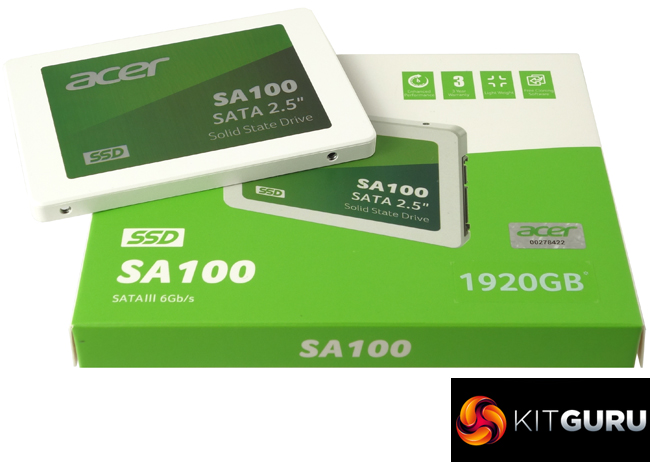
The entry-level SA100 comes in a range of five capacities; 120GB, 240GB, 480GB, 960GB and the flagship model, the 1.92TB drive which we are reviewing here. At the heart of the SA100 is a Maxio MAS0902A-B2C controller. The controller is a DRAM-less 4-channel IC and at just 9mm by 9mm, it's one of the most compact NAND controllers around.
The 1.92TB SA100 is rated as up to 560MB/s and 508MB/s for reads and writes respectively. Using the ATTO benchmark the best read figure we saw was 537MB/s with writes at 478MB/s, both short of the official numbers. However, using the CrystalDiskMark benchmark we could confirm both official figures with best results of 562MB/s for reads and 514MB/s for writes.
As for random 4K performance, the SA100 is rated up to 76,000 IOPS for reads and up to 77,000 IOPS for writes. We couldn't hit the maximum figures during testing, the best read figure we saw was 75,667 IOPS (QD8) with writes at 71,721 IOPS at a QD of 4.
Acer told us the UK MSRP for the 1.92TB model is £169.99 and availability is expected at Scan from mid-September. We also found the drive on Newegg.com, shipping from the US, for £163.19 (inc VAT) HERE, with postage an additional £20 to the UK.
Discuss on our Facebook page HERE.
Pros
- All-around performance.
- Decent endurance.
Cons
- Write performance is disappointing in some of our tests.
- 3-year warranty is a bit mean.
KitGuru says: It's an interesting move by Acer to try and grab market share in a hugely competitive consumer storage market. The 1.92TB SA100 performs well and Acer has given it every chance with competitive pricing.
 KitGuru KitGuru.net – Tech News | Hardware News | Hardware Reviews | IOS | Mobile | Gaming | Graphics Cards
KitGuru KitGuru.net – Tech News | Hardware News | Hardware Reviews | IOS | Mobile | Gaming | Graphics Cards


